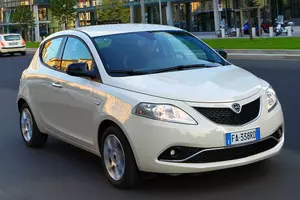
| Vehicle | Curb weight | Difference from world's smallest | Weight to power ratio | 0—60 mph acceleration ratio | Consumption ratio |
|---|---|---|---|---|---|
| 1.2 |
965 kg / 2128 lbs |
540 kg (1191 lbs) heavier | 14 kg to 1 hp | 70 kg/s (154 lbs/s) |
186 kg/L (410 lbs/L) |
| 0.9 TwinAir |
980 kg / 2161 lbs |
555 kg (1224 lbs) heavier | 12 kg to 1 hp | 84 kg/s (185 lbs/s) |
233 kg/L (514 lbs/L) |
| 0.9 |
1090 kg / 2403 lbs |
665 kg (1466 lbs) heavier | 14 kg to 1 hp | 88 kg/s (194 lbs/s) |
237 kg/L (523 lbs/L) |
| 1.3 MultiJet2 |
1050 kg / 2315 lbs |
625 kg (1378 lbs) heavier | 11 kg to 1 hp | 97 kg/s (214 lbs/s) |
276 kg/L (609 lbs/L) |
| Vehicle | 1.2 |
|---|---|
| Curb weight |
965 kg / 2128 lbs |
| Difference from world's smallest | 540 kg (540 lbs) heavier |
| Weight to power ratio | 14 kg to 1 hp |
| 0—60 mph acceleration ratio | 70 kg/s (154 lbs/s) |
| Consumption ratio |
186 kg/L (410 lbs/L) |
| Vehicle | 0.9 TwinAir |
| Curb weight |
980 kg / 2161 lbs |
| Difference from world's smallest | 555 kg (555 lbs) heavier |
| Weight to power ratio | 12 kg to 1 hp |
| 0—60 mph acceleration ratio | 84 kg/s (185 lbs/s) |
| Consumption ratio |
233 kg/L (514 lbs/L) |
| Vehicle | 0.9 |
| Curb weight |
1090 kg / 2403 lbs |
| Difference from world's smallest | 665 kg (665 lbs) heavier |
| Weight to power ratio | 14 kg to 1 hp |
| 0—60 mph acceleration ratio | 88 kg/s (194 lbs/s) |
| Consumption ratio |
237 kg/L (523 lbs/L) |
| Vehicle | 1.3 MultiJet2 |
| Curb weight |
1050 kg / 2315 lbs |
| Difference from world's smallest | 625 kg (625 lbs) heavier |
| Weight to power ratio | 11 kg to 1 hp |
| 0—60 mph acceleration ratio | 97 kg/s (214 lbs/s) |
| Consumption ratio |
276 kg/L (609 lbs/L) |
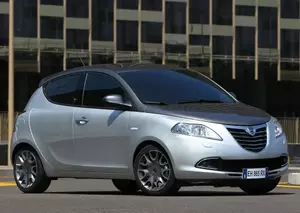
| Vehicle | Curb weight | Difference from world's smallest | Weight to power ratio | 0—60 mph acceleration ratio | Consumption ratio |
|---|---|---|---|---|---|
| 1.2 |
965 kg / 2128 lbs |
540 kg (1191 lbs) heavier | 14 kg to 1 hp | 70 kg/s (154 lbs/s) |
182 kg/L (401 lbs/L) |
| 0.9 TwinAir |
980 kg / 2161 lbs |
555 kg (1224 lbs) heavier | 12 kg to 1 hp | 87 kg/s (192 lbs/s) |
233 kg/L (514 lbs/L) |
| 1.3 MultiJet2 |
1050 kg / 2315 lbs |
625 kg (1378 lbs) heavier | 11 kg to 1 hp | 97 kg/s (214 lbs/s) |
276 kg/L (609 lbs/L) |
| 0.9 |
1090 kg / 2403 lbs |
665 kg (1466 lbs) heavier | 14 kg to 1 hp | 88 kg/s (194 lbs/s) |
237 kg/L (523 lbs/L) |
| Vehicle | 1.2 |
|---|---|
| Curb weight |
965 kg / 2128 lbs |
| Difference from world's smallest | 540 kg (540 lbs) heavier |
| Weight to power ratio | 14 kg to 1 hp |
| 0—60 mph acceleration ratio | 70 kg/s (154 lbs/s) |
| Consumption ratio |
182 kg/L (401 lbs/L) |
| Vehicle | 0.9 TwinAir |
| Curb weight |
980 kg / 2161 lbs |
| Difference from world's smallest | 555 kg (555 lbs) heavier |
| Weight to power ratio | 12 kg to 1 hp |
| 0—60 mph acceleration ratio | 87 kg/s (192 lbs/s) |
| Consumption ratio |
233 kg/L (514 lbs/L) |
| Vehicle | 1.3 MultiJet2 |
| Curb weight |
1050 kg / 2315 lbs |
| Difference from world's smallest | 625 kg (625 lbs) heavier |
| Weight to power ratio | 11 kg to 1 hp |
| 0—60 mph acceleration ratio | 97 kg/s (214 lbs/s) |
| Consumption ratio |
276 kg/L (609 lbs/L) |
| Vehicle | 0.9 |
| Curb weight |
1090 kg / 2403 lbs |
| Difference from world's smallest | 665 kg (665 lbs) heavier |
| Weight to power ratio | 14 kg to 1 hp |
| 0—60 mph acceleration ratio | 88 kg/s (194 lbs/s) |
| Consumption ratio |
237 kg/L (523 lbs/L) |
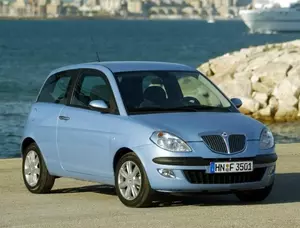
| Vehicle | Curb weight | Difference from world's smallest | Weight to power ratio | 0—60 mph acceleration ratio | Consumption ratio |
|---|---|---|---|---|---|
| 1.2 i |
945 kg / 2084 lbs |
520 kg (1147 lbs) heavier | 16 kg to 1 hp | 59 kg/s (130 lbs/s) |
158 kg/L (348 lbs/L) |
| 1.2 i 16V |
975 kg / 2150 lbs |
550 kg (1213 lbs) heavier | 12 kg to 1 hp | 78 kg/s (172 lbs/s) |
163 kg/L (359 lbs/L) |
| 1.3 16V CDRi Multijet |
1045 kg / 2304 lbs |
620 kg (1367 lbs) heavier | 15 kg to 1 hp | 73 kg/s (161 lbs/s) |
227 kg/L (501 lbs/L) |
| 1.4 i 16V |
980 kg / 2161 lbs |
555 kg (1224 lbs) heavier | 10 kg to 1 hp | 94 kg/s (207 lbs/s) |
148 kg/L (326 lbs/L) |
| Vehicle | 1.2 i |
|---|---|
| Curb weight |
945 kg / 2084 lbs |
| Difference from world's smallest | 520 kg (520 lbs) heavier |
| Weight to power ratio | 16 kg to 1 hp |
| 0—60 mph acceleration ratio | 59 kg/s (130 lbs/s) |
| Consumption ratio |
158 kg/L (348 lbs/L) |
| Vehicle | 1.2 i 16V |
| Curb weight |
975 kg / 2150 lbs |
| Difference from world's smallest | 550 kg (550 lbs) heavier |
| Weight to power ratio | 12 kg to 1 hp |
| 0—60 mph acceleration ratio | 78 kg/s (172 lbs/s) |
| Consumption ratio |
163 kg/L (359 lbs/L) |
| Vehicle | 1.3 16V CDRi Multijet |
| Curb weight |
1045 kg / 2304 lbs |
| Difference from world's smallest | 620 kg (620 lbs) heavier |
| Weight to power ratio | 15 kg to 1 hp |
| 0—60 mph acceleration ratio | 73 kg/s (161 lbs/s) |
| Consumption ratio |
227 kg/L (501 lbs/L) |
| Vehicle | 1.4 i 16V |
| Curb weight |
980 kg / 2161 lbs |
| Difference from world's smallest | 555 kg (555 lbs) heavier |
| Weight to power ratio | 10 kg to 1 hp |
| 0—60 mph acceleration ratio | 94 kg/s (207 lbs/s) |
| Consumption ratio |
148 kg/L (326 lbs/L) |
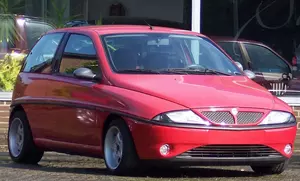
| Vehicle | Curb weight | Difference from world's smallest | Weight to power ratio | 0—60 mph acceleration ratio | Consumption ratio |
|---|---|---|---|---|---|
| 1.2 |
935 kg / 2062 lbs |
510 kg (1125 lbs) heavier | 16 kg to 1 hp | 74 kg/s (163 lbs/s) |
146 kg/L (322 lbs/L) |
| 1.2 16V |
910 kg / 2007 lbs |
485 kg (1070 lbs) heavier | 11 kg to 1 hp | 88 kg/s (194 lbs/s) | - |
| 1.1 |
850 kg / 1874 lbs |
425 kg (937 lbs) heavier | 16 kg to 1 hp | 59 kg/s (130 lbs/s) | - |
| 1.2 i 16V |
910 kg / 2007 lbs |
485 kg (1070 lbs) heavier | 11 kg to 1 hp | 86 kg/s (190 lbs/s) | - |
| 1.4 12V |
935 kg / 2062 lbs |
510 kg (1125 lbs) heavier | 12 kg to 1 hp | 79 kg/s (174 lbs/s) |
134 kg/L (295 lbs/L) |
| Vehicle | 1.2 |
|---|---|
| Curb weight |
935 kg / 2062 lbs |
| Difference from world's smallest | 510 kg (510 lbs) heavier |
| Weight to power ratio | 16 kg to 1 hp |
| 0—60 mph acceleration ratio | 74 kg/s (163 lbs/s) |
| Consumption ratio |
146 kg/L (322 lbs/L) |
| Vehicle | 1.2 16V |
| Curb weight |
910 kg / 2007 lbs |
| Difference from world's smallest | 485 kg (485 lbs) heavier |
| Weight to power ratio | 11 kg to 1 hp |
| 0—60 mph acceleration ratio | 88 kg/s (194 lbs/s) |
| Consumption ratio | - |
| Vehicle | 1.1 |
| Curb weight |
850 kg / 1874 lbs |
| Difference from world's smallest | 425 kg (425 lbs) heavier |
| Weight to power ratio | 16 kg to 1 hp |
| 0—60 mph acceleration ratio | 59 kg/s (130 lbs/s) |
| Consumption ratio | - |
| Vehicle | 1.2 i 16V |
| Curb weight |
910 kg / 2007 lbs |
| Difference from world's smallest | 485 kg (485 lbs) heavier |
| Weight to power ratio | 11 kg to 1 hp |
| 0—60 mph acceleration ratio | 86 kg/s (190 lbs/s) |
| Consumption ratio | - |
| Vehicle | 1.4 12V |
| Curb weight |
935 kg / 2062 lbs |
| Difference from world's smallest | 510 kg (510 lbs) heavier |
| Weight to power ratio | 12 kg to 1 hp |
| 0—60 mph acceleration ratio | 79 kg/s (174 lbs/s) |
| Consumption ratio |
134 kg/L (295 lbs/L) |
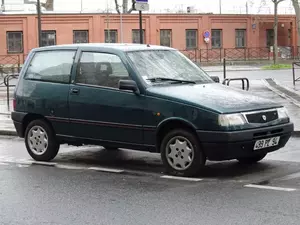
| Vehicle | Curb weight | Difference from world's smallest | Weight to power ratio | 0—60 mph acceleration ratio | Consumption ratio |
|---|---|---|---|---|---|
| 1.1i |
800 kg / 1764 lbs |
375 kg (827 lbs) heavier | 16 kg to 1 hp | 53 kg/s (117 lbs/s) |
129 kg/L (284 lbs/L) |
| 1.1 Fire |
780 kg / 1720 lbs |
355 kg (783 lbs) heavier | 16 kg to 1 hp | 52 kg/s (115 lbs/s) |
128 kg/L (282 lbs/L) |
| 1.1 i 4X4 |
890 kg / 1962 lbs |
465 kg (1025 lbs) heavier | 17 kg to 1 hp | 49 kg/s (108 lbs/s) |
127 kg/L (280 lbs/L) |
| 1.3 i |
855 kg / 1885 lbs |
430 kg (948 lbs) heavier | 12 kg to 1 hp | 72 kg/s (159 lbs/s) |
119 kg/L (262 lbs/L) |
| Vehicle | 1.1i |
|---|---|
| Curb weight |
800 kg / 1764 lbs |
| Difference from world's smallest | 375 kg (375 lbs) heavier |
| Weight to power ratio | 16 kg to 1 hp |
| 0—60 mph acceleration ratio | 53 kg/s (117 lbs/s) |
| Consumption ratio |
129 kg/L (284 lbs/L) |
| Vehicle | 1.1 Fire |
| Curb weight |
780 kg / 1720 lbs |
| Difference from world's smallest | 355 kg (355 lbs) heavier |
| Weight to power ratio | 16 kg to 1 hp |
| 0—60 mph acceleration ratio | 52 kg/s (115 lbs/s) |
| Consumption ratio |
128 kg/L (282 lbs/L) |
| Vehicle | 1.1 i 4X4 |
| Curb weight |
890 kg / 1962 lbs |
| Difference from world's smallest | 465 kg (465 lbs) heavier |
| Weight to power ratio | 17 kg to 1 hp |
| 0—60 mph acceleration ratio | 49 kg/s (108 lbs/s) |
| Consumption ratio |
127 kg/L (280 lbs/L) |
| Vehicle | 1.3 i |
| Curb weight |
855 kg / 1885 lbs |
| Difference from world's smallest | 430 kg (430 lbs) heavier |
| Weight to power ratio | 12 kg to 1 hp |
| 0—60 mph acceleration ratio | 72 kg/s (159 lbs/s) |
| Consumption ratio |
119 kg/L (262 lbs/L) |